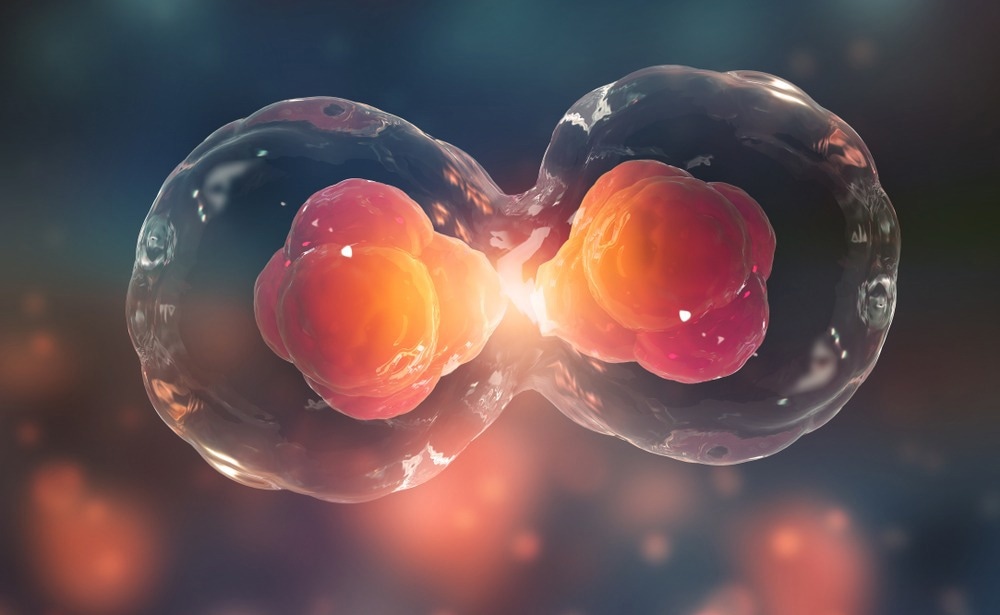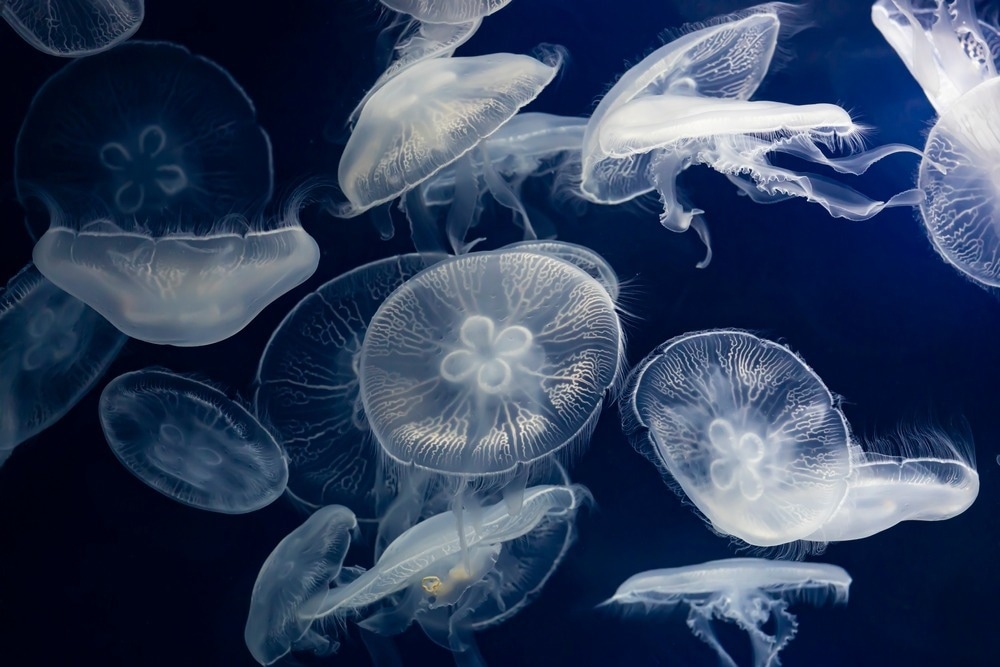Animals can be classified as diploblasts or triploblasts, depending on the number of germ layers present during their early development. Comparing diploblasts and triploblasts helps better understand animal developmental biology, body plans, and evolutionary processes.

Image Credit: Yurchanka Siarhei/Shutterstock.com
Introduction to Early Animal Development
Early animal development is when a single fertilized egg transforms into a complex multicellular embryo. This involves a series of highly coordinated events that give rise to an animal’s complex body plan, shaping its structure and function.
Understanding early animal development provides valuable insights into the vast diversity of animals on Earth. Studying developmental variations among different animal groups allows scientists to trace the origins of different body plans and how these have evolved.
Diploblasts and Triploblasts: Defining the Basics
During early development, most animal species undergo a separation of tissues into germ layers, which serve as the architectural blueprint for an organism’s body plan. Each germ layer is predetermined to develop into different specialized tissues based on its position.
Animals can be classified as diploblasts or triploblasts, depending on the number of germ layers present during embryonic development. Diploblasts possess only two germ layers, known as the endoderm and ectoderm:
Endoderm: The innermost layer gives rise to the lining of the respiratory tract, digestive tract, and associated vital organs, such as the liver and stomach.
Ectoderm: The outermost layer forms the epidermis (outer skin layer) and the central nervous system. It also plays a vital role in the development of sensory organs, such as the eyes and ears.
As well as having an endoderm and ectoderm, triploblasts develop a third layer known as the mesoderm:
Mesoderm: this layer forms between the endoderm and ectoderm, giving rise to all muscle tissues, including the intestinal muscles and cardiac tissues, connective tissues, and visceral organs like the spleen and kidneys.
The Rise of Diploblasts: The Cnidarians
Diploblastic animals are generally simple in structure and exhibit radial symmetry. This means that they display a repeating pattern around a central axis.
Cnidarians, a group of soft-bodies, aquatic animals that include jellyfish, corals, and sea anemones, are some of the most well-known diploblasts. Most cnidarians contain a body wall that consists of an outer and inner epithelium, between which lies a gelatinous mesoglea.

Image Credit: JENG BO YUAN/Shutterstock.com
The outer layer includes cells known as cnidocytes, which contain fluid-filled capsules called cnidae that are used to capture and immobilize prey. The inner layer produces digestive enzymes to break down food particles.
Cnidarians display two distinct body forms: the polyp and the medusa. The polyp is typically sessile, attaching itself to surfaces, while the medusa is a free-swimming, umbrella-shaped form.
Cnidarians are some of the most primitive animals. Their relatively simple body plan provides critical insights into the process of animal development and the emergence of multicellularity.
Triploblasts: Complexity and Diversity
Triploblastic animals are generally more complex in structure than diploblasts and exhibit a wide range of different body plans and behaviors. This diversity means that they are adapted to a wide range of ecological niches. Triploblasts are bilaterally symmetrical, meaning their left and right sides are mirror images of each other.
Triploblastic animals belong to a wide range of phyla, including Arthropoda, Mollusca, Annelida, and Chordata:
Arthropoda: includes insects, arachnids, and crustaceans.
Mollusca: animals such as snails, clams, squids, and octopuses.
Annelida: annelids are segmented worms like earthworms and leeches.
Chordata: chordates are a diverse group containing vertebrates, such as birds, mammals, and fish, and some invertebrates, like the tunicate. They all have a hollow nerve cord, called a notochord, formed from the mesoderm.

Image Credit: Rolf E. Staerk/Shutterstock.com
Germ Layers and Embryonic Development
The evolution of the mesoderm paved the way for the development of complex organ systems, intricate behaviors, and facilitated the astonishing diversity of life forms we observe today.
The mesoderm is a versatile germ layer that gives rise to a wide array of tissues and organs. The specific fate of mesodermal cells depends on their location within the embryo, their interactions with neighboring tissues, and the signals they receive from various signaling pathways. The development and specialization of mesodermal tissue can vary widely among different animal groups depending on their body plans and evolutionary histories.
Most triploblasts have an internal body cavity called a coelom. This is usually fluid-filled and lies between the visceral organs and the body wall. It contains many vital organs, including the circulatory system, reproductive organs, and digestive system.
The evolution of the coelom provided animals with functional advantages. It acts as a shock absorber for major organ systems and promotes optimal organ development and placement, as organs within the coelom can grow and move more freely. The coelom also improves animal motility and plays a role in nutrient transfer and waste removal.
Triploblasts that develop a true coelom, formed from mesodermal tissue, are called eucoelomates and include arthropods, annelids, and chordates. Those without a coelom, such as flatworms, are called acoelomates. Some develop a false coelom derived from mesoderm and endoderm tissue; these animals are known as pseudocoelomates.
Evolutionary Implications
It is generally accepted that triploblasts evolved from a simpler, diploblastic ancestor. The divergence between diploblasts and triploblasts holds profound implications for the evolution of animal life.
Comparing the development and function of different germ layers within diploblastic and triploblastic animals can provide insights into how the evolution of additional germ layers contributed to the development of more complex body plans.
Further study of different body plans can help to expose how changes in body structure facilitated the evolution of more complex locomotion, behavior, and sensory capabilities.
In summary, comparing diploblasts and triploblasts sheds light on animal developmental biology. It reveals how adding a third germ layer in triploblasts unlocked greater complexity and diversity over evolutionary history.
Sources
- Embryonic Development. [Online] LibreTexts. Available at: bio.libretexts.org/.../13.03%3A_Embryological_Development (Accessed on 14 September 2023).
- Nowotschin, S., Hadjantonakis, A.K. and Campbell, K. (2019). The endoderm: a divergent cell lineage with many commonalities. Development, 146(11). doi.org/10.1242/dev.150920
- Technau, U. and Steele, R.E. (2011). Evolutionary crossroads in developmental biology: Cnidaria. Development, 138(8), pp.1447-1458. doi.org/10.1242/dev.048959
- (2022) Triploblastic. [Online] Biology Online. Available at: https://www.biologyonline.com/dictionary/triploblastic (Accessed on 14 September 2023).
- DeSalle, R. and Schierwater, B. (2007). Key transitions in animal evolution. Integrative and Comparative Biology, 47(5), pp.667-669. doi.org/10.1093/icb/icm042
Further Reading
Last Updated: Sep 20, 2023